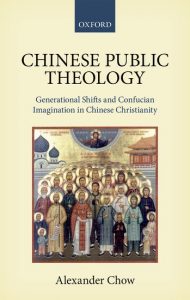World Christianity and Reciprocal Exchange
Edited by Afe Adogame, Raimundo Barreto and Richard F. Young

There is sometimes an assumption that Christianity operates, grows and develops in a historical, social, cultural, political and religious silo or context. This is hardly the case. Christianity, past and present, has shaped all geographical, religious and cultural contexts in which it has found itself, but all these various contexts, cultures and religious traditions have in turn also had an impact on Christianity in manifold ways. An exploration of this reciprocal interaction is important for our global age. Christians once viewed the world in split-screen mode: there was Europe, the centre of the faith, and there was the rest of the world with large swaths of non-Christian lands that were ripe for the work of missionaries. However, over the last century an enormous growth in Christianity across the Global South and a drop in the proportion of Europeans and Americans who identify as Christian has upended that perspective. The centre of gravity has shifted from the Global North, serving notice that the future of the faith will look increasingly diverse and dynamic.
The study of World Christianity seeks to understand how Christian communities embody historical and cultural experiences locally and globally; as such, it fosters the study of both local and translocal ways of knowing and doing. Thus, World Christianity hardly exists in a historical and socio-cultural vacuum; it encounters, affects, and is in turn impacted by local, indigenous worldviews, religions and cultures. The complex historical and socio-cultural encounters of worldviews, religions and cultures at the root of Christian communities in a variety of contexts demand further understanding and analysis. The selected, peer-reviewed essays in this issue, originally presented at Princeton’s Third International Conference (2021), explore and reflect on such a diversity of local, indigenous expressions and experiences of Christianity, their encounter with other religious traditions, and the variety of ways they interact with one another critically and constructively across time and space. While based on case studies, they focus on ethnographic practices and new methodological directions. Common themes addressed include conversion, translation, identity, missions, materiality, migration, diaspora, intercultural theology and interreligious dialogue.
Continue reading
 On March 6, 2018, we will be launching Alexander Chow’s new book, Chinese Public Theology (Oxford University Press, 2018).
On March 6, 2018, we will be launching Alexander Chow’s new book, Chinese Public Theology (Oxford University Press, 2018). Recent historical scholarship on modern Christian missions to China, as to the non-European world as a whole, has been bedeviled by two weaknesses. First, historians have written about Protestant missions to China, or less frequently about Catholic ones, but very rarely about the two together within a single monograph. Second, Anglo-American scholars have tended for obvious linguistic reasons to confine themselves to the study of British or American missions, to the general neglect of those from continental Europe. Not the least of the virtues of Albert Monshan Wu’s book is that it transcends both of these limitations at once. By selecting as his two case studies in missions to China the Protestant Berlin Missionary Society (BMS) and the Catholic Society of the Divine Word (SVD) Wu is able to illuminate both commonalties and dissimilarities across the confessional divide.
Recent historical scholarship on modern Christian missions to China, as to the non-European world as a whole, has been bedeviled by two weaknesses. First, historians have written about Protestant missions to China, or less frequently about Catholic ones, but very rarely about the two together within a single monograph. Second, Anglo-American scholars have tended for obvious linguistic reasons to confine themselves to the study of British or American missions, to the general neglect of those from continental Europe. Not the least of the virtues of Albert Monshan Wu’s book is that it transcends both of these limitations at once. By selecting as his two case studies in missions to China the Protestant Berlin Missionary Society (BMS) and the Catholic Society of the Divine Word (SVD) Wu is able to illuminate both commonalties and dissimilarities across the confessional divide. 